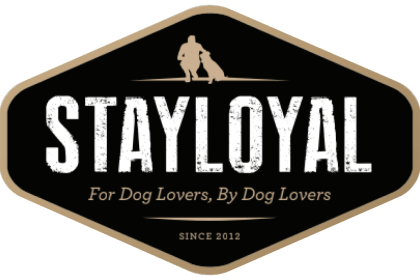Types of Dog Collars and their Uses

Just like there are a lot of leashes for you to choose from, there are also several types of dog collars. While modern marketing may make it seem like your dog’s collar is just a fashion accessory, it’s really much more than that. For starters, a collar immediately lets people know he is owned by someone should he get lost. And a tag on that collar could help him find his way home. Collars are also one of the main ways we keep our dogs close to us through the use of a leash. Each type of collar was designed for a reason and work in different ways. Here is a brief overview of the common types of collars and their uses so you can choose the one that will work best for you and your dog.
FLAT COLLARS
This is your typical collar. Usually it has a plastic or metal snap buckle, some have buckles like a belt. This is what most people think of when they hear the word “dog collar.” They have been around for ages and for many dogs, they are all that’s needed.
Pros
They lay flat against your dog’s neck and are quite comfortable for them to wear all the time, provided you don’t have it on too tight.
They come in all kinds of materials that work with different life styles, including leather for the dog that plays rough and needs something sturdy. Synthetic materials can be good for dogs that are in and out of the water or go to the beach where salt water would damage a leather collar quite quickly.
Cons
Many dogs can slip out of these collars, which can be dangerous if you are out for a walk in the neighborhood. If your dog is a constant puller, it does put pressure on your dog’s neck and throat, which can cause injury to the trachea.
There is no extra control feature in this collar, so dogs that are not trained to walk nicely on the leash can pull you down the street.
Types of dogs flat collars work well for:
If you have a well-mannered dog that doesn’t pull constantly and has a blocky head, than this type of collar is just fine. Think Labrador , Saint Bernard, Mastiffs etc. If your dog does back-out of or otherwise slip their collar, than skip this type for safety reasons.
How to Fit a Flat Collar
When fitting the collar, you should be able to put two fingers between the inside of the collar and the dog’s neck. Remember to check your growing puppy’s collar often – they can get tight quick!
MARTINGALES
If you are a horse person, the name of this collar may confuse you. Others have probably never heard this term, because they are often referred by other names as well. A martingale is a collar that has an extra loop where the leash attaches that tightens when tension is applied. These collars were created to
fix the problem of dog’s slipping out of their flat collars. Sometimes they are referred to as “no-slip collars” or “limited choke” due to this feature.
Pros
Makes it so your dog cannot slip their collar, which is very important.
Like flat collars, you can get them in leather, nylon or leather/nylon-chain combination, so you have some choice of materials.
Cons
If fitted improperly, they can work like a choke collar, so they must be fitted correctly.
Like traditional flat collars, martingales can cause damage on a dog’s trachea if they constantly pull.
On short-legged breeds or tiny puppies, the extra loop can cause a tripping hazard if their foot gets caught.
The loop is a danger for getting caught on things, so it’s not recommended that this collar be left on your dog when he is loose in your house or yard. Keep a flat collar with tags on it for yard play.
Types of dogs martingale collars work well for:
Martingales are great for bullet-headed dog breeds such as Greyhounds, Shetland Sheepdogs, Collies, Whippets, etc., that can slip flat collars. Since when it’s properly fitted it should not work like a choke collar, these collars work best on dogs that have nice leash manners.
How to Fit a Martingale Collar
As mentioned above, fit for this collar is imperative otherwise it becomes a limited choke, which is not the intended use. When the collar comes together on your dog (so pulled tight), you should be able to fit your two fingers between it and your dog’s neck, just like with the flat collar. Then test to make sure your dog can’t slip out by bringing the loop on the martingale to the top of your dog’s head, and then gently pull forward to test if your dog can back out when it’s tightened. If you can slip it over your dog’s head, tighten it a bit more and test again. It should be just tight enough to keep your dog from slipping out.
AVERSIVE/CORRECTION COLLARS
The next set of collars are all “aversive collars” – these are collars that were created to cause pain as a form of correction to train dogs. The collar becomes an aversive that your dog wants to get/stay away from by (theoretically) doing the right thing. I’m adding these types of collars because they exist and want you to know about them. We are not commenting on whether they should or should not be used.
PRONG
Prong collars, also sometimes called pinch collars, have been around a long time. The collar is made of links with “teeth-like” prongs on the inside. When the control loop is pulled, these teeth pinch your dog’s skin, causing discomfort and pain as a form of correction. Originally, these were always metal, but
they are now making them with plastic prongs, and even nylon and leather covered ones that conceal the prong collar. They are banned in Australia.
These collars are popular with correction-based dog trainers. They are often given to owners to use on dogs that are reactive, strong pullers or just generally hard to handle. However, they come with great risks.
Prong collars can damage a dog’s trachea as well as cause injury to their neck.
Types of dogs prong collars work well for:
Many will say a dog that pulls should be on a prong collar, but really, it’s just damaging their trachea. Since science has proven that positive-reinforcement techniques are more affective, there is no reason to use a prong collar.
CHOKE CHAIN COLLAR
Almost every dog owner is familiar with the choke collar. Usually made of chain (but can also be made of fabric and even leather, which are typically seen in the conformation ring), choke collars do exactly what their name implies. As soon as either end of the leash pulls, it tightens around your dog’s throat.
Again, like the prong collar, the choke collar has a lot of health hazards including trachea damage. If your dog pulls enough on a choke collar, especially a little dog, you will be facing trachea surgery, which costs thousands of dollars.
Types of dogs choke collars work well for:
If you show your dog in conformation, it should be noted that you can use a martingale collar in the ring, it doesn’t have to be a choke. Most dogs in the show ring are very well trained and never actually choke on the collar because they have been trained not to pull on the leash. This is the only type of dog that won’t be at risk of trachea damage from a choke collar – an already trained one.
ELECTRIC COLLAR
Electric or shock collars do exactly that – they shock the dog with electrical current as a severe form of correction. They are illegal in the following states: Australian Capital Territory, South Australia and New South Wales (NSW allows the use of electric collars for invisible fencing).
When deciding between a flat and martingale collar, make sure you pick the right size collar for your dog. As you probably noticed, all dog collars have the capability to cause trachea damage. For that reason, really small dogs or dogs that pull a lot, might do better with a harness (front clipping for pullers) or a head collar (Gentle Leader is the prime example). Those may save you some vet bills down the road and will actually make walking the puller easier until he has learned some manners. And of course, your dog can always have more than one collar if you just can’t decide what style, type or color you want.








